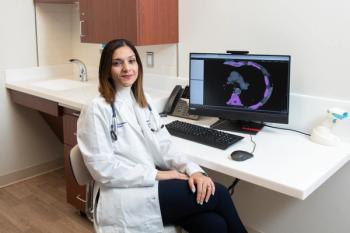
News|Articles|November 21, 2023
Daily Dose: Speech is Promising Biomarker for MHE and OHE
Author(s)Sydney Jennings
Your daily dose of the clinical news you may have missed.
Advertisement
Patient Care brings primary care clinicians a lot of medical news every day—it’s easy to miss an important study. The Daily Dose provides a concise summary of one of the website's leading stories you may not have seen.
Last week, we reported on findings from a study presented at The Liver Meeting, November 10-14, 2023, in Boston, MA.
The study
Researchers conducted the HE Audio Recording to Detect MHE or HEAR-MHE study to evaluate the use of recorded speech to identify minimal hepatic encephalopathy (MHE) in previously unaffected patients and to predict future overt HE (OHE).
The team enrolled 169 outpatients with cirrhosis from 2 geographically disparate centers to participate.
Patients were assessed using the Psychometric Hepatic Encephalopathy Score (PHES), a validated test for diagnosing MHE and the animal naming test (ANT), also an established assessment, and were recorded while reading a paragraph aloud. Researchers used the Winterlight Labs analysis platform, a smartphone app designed to characterize speech in dementia, to extract speech variables from the audio recordings, including acoustic, lexical, and syntactic features.
The team followed the cohort prospectively for 6 months to identify episodes of OHE. Participants had been categorized into 3 non-overlapping groups: (1) those with prior OHE and HE treatment, (2) those with MHE and no prior OHE (diagnosed by PHES ≤ -4), and (3) those without MHE or prior OHE. Researchers applied linear, logistic, and Cox regression analyses to predict PHES, MHE, and time to OHE, respectively.
Findings
Speech correlates with PHES: 82 speech variables associated with PHES in the overall cohort (P<.05 with false discovery rate [FDR] adjustment). A model of 5 speech variables (2 speech tempo and 3 acoustic) was associated with PHES (r2=0.28, P<.001).
Speech associates with MHE: 71 speech variables significantly differed between patients with and without MHE (ie, groups 2 and 3; P<.05 with FDR adjustment) – 4 speech tempo and 67 acoustic variables. A model of 2 speech variables (1 speech tempo and 1 acoustic) was comparable to animal naming test to identify MHE (AUC 0.70 vs 0.66, P = .19).
Speech predicts future OHE: There were 13 OHE events in 10 patients with cirrhosis (6 with prior OHE, 2 with MHE, 2 without OHE or MHE), which occurred a median 33 days from enrollment. A model including speech rate and 2 acoustic variables predicted time to OHE (P = .001). Specifically, a speech rate <133 words/min was associated with a significantly shorter time to OHE than ≥133 words/min (HR =0.11, P = .001).
Authors' comment
"Recorded speech while reading a paragraph – a quick and easy test – was associated with PHES, was able to identify MHE, and predicted future OHE. Speech is simple to record, provides immediate point-of-care data, and represents a promising biomarker in HE."
Newsletter
Enhance your clinical practice with the Patient Care newsletter, offering the latest evidence-based guidelines, diagnostic insights, and treatment strategies for primary care physicians.
Advertisement
Advertisement
Advertisement
Trending on Patient Care Online
1
For GLP-1 Medication Users, Investigational NK-1 Agent May Quell GI Side Effects by Half
2
Preventive Health Inventory Boosts Diabetes and Hypertension Management Without Increasing Hospitalizations Among Veterans: New Study
3
New Online Tool Calculates Percentiles for 30-Year Cardiovascular Disease Risk in Younger Adults
4
Autoimmune Disease Risk After HT: Clinical Insights From a Large Real-World Study
5

























































































































































































































































































